A version of this is appearing in our local paper – here it is with more photos, and links to resources and other articles I’ve written
As I soak in the early summer wonders of fledgling birds, growing lizards and ripening berries, I also realize that it’s tough times too. Even with that wonderful rain last week I know here in the West we’ve received way too little seasonal rain – my rain gauge measures less than 7 inches, half our average for our Southern California area. And of course, it’s blazing hot.
Here are some things to consider in helping our natural world.
Water your Trees
Our city of Redlands is so blessed to be a Tree City with 100 plus year old trees. Please don’t wait until it’s too late and your favorite trees show signs of disease from the stress of drought. Wilting, curling or yellowing are signs of drought. Others include scorching with brown areas on the vein or edges, or needles that turn color.
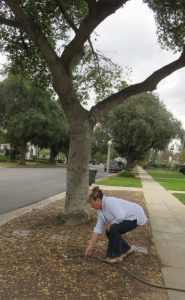
The good news is experts say even a couple deep waterings can tide over a tree to the next season. There are many methods but an easy way is using a slowly running hose or a sprinkler, leaving it there until it percolates down about a foot, and moving it to another area around the perimeter of the tree. The roots extend out past the canopy so make sure you water away from the trunk. Don’t worry if you’re doing it right – any water is better than none. Click here for more on watering trees during drought.
Keep your Trees and Don’t Overprune!
Our trees not only add property value (a house with trees or in a neighborhood with mature trees is up to 20% more saleable) but remove CO2 from the air, and significantly reduce energy costs. Did you know a tree’s shade can reduce temperatures by at least 20 degrees?
I see some mature trees being removed when the reason doesn’t seem obvious — and way too many trees are overpruned. Trees suffer from sunburn, causing the bark tissue to overheat. And removing leaves is stressful, requiring the tree to depend on its energy stores. Sometimes it’s a mature live oak, which industry guidelines say to not remove more than 5% of live material – that’s only removing 1 of 20 branches – at the most.
Please hire an ISA certified arborist – remember that tree companies, even if licensed, are not required to have any training on trees or tree care. I recently learned that the California State License Bureau is in the process of instituting a license class which would require a trade exam. That is huge news.
Click here for more on the resulting problems from overpruning and here for basic tree science.
Birdbaths and Decals for the Birds
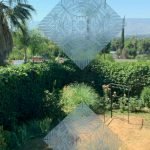
Even though we have ultraviolet ‘Window Alert’ decals we bought online, we’ve had birds striking our windows, likely young fledglings that fly towards the reflection of the trees and shrubs. Window Alert has bird and other shapes and now Lowe’s Hardware is now carrying some artsy designs. Also, Audubon Society suggests moving bird feeders to within 2-3 feet of your house so birds don’t pick up enough speed to hurt themselves.
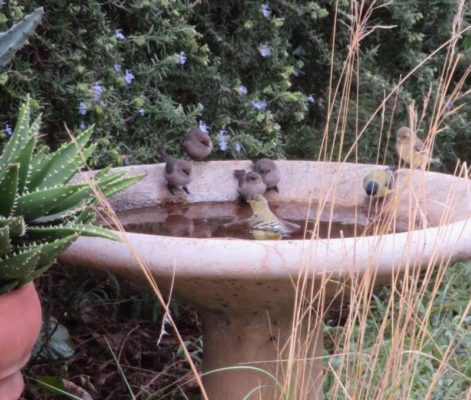
Birdbaths or water sources are not only a vital part of a habitat garden but also help with the heat. Make sure you place it where there is cover for birds to hide nearby, and consider buying a ‘water wiggler’ that is battery operated and does two things – attracts birds and the insects they depend on for food, while repelling mosquitos. Click here for more tips on preventing bird window hits and here on other tips for spring wildlife.
Consider Planting Native Plants this Fall
Click here for my recent article on the marvels of our habitat garden
There is more and more recognition that people need to grow native plants to cultivate the food, nesting materials and shelter that wild birds and other critters need to survive.
The truth is vital insects evolved with California natives and every time we plant a non-native, we are removing the food source for them and birds, and the many mammals that also depend on the insects and habitat that native plants provide. (I have many articles on native plants – here’s one on habitat gardening and how insects are good)
Now is the time to explore native plants – wherever you live – even one you might grow in a container. Planting in fall to early winter planting is best. Check your state but here are great resources in California:
- The California Native Plant Society
- Calscape – where you can plug in your zip code and view recommended plants.
- Websites – Tree of Life Nursery and Las Pilitas are two of my favorites
- Nurseries/Plant sales: Additionally, more nurseries are carrying California natives, including Cherry Valley Nursery. Parkview and Louie’s Nurseries in Riverside. Check your local CNPS chapter for their annual fall plant sales.
Thanks for reading this article, and caring about our animal brethren!
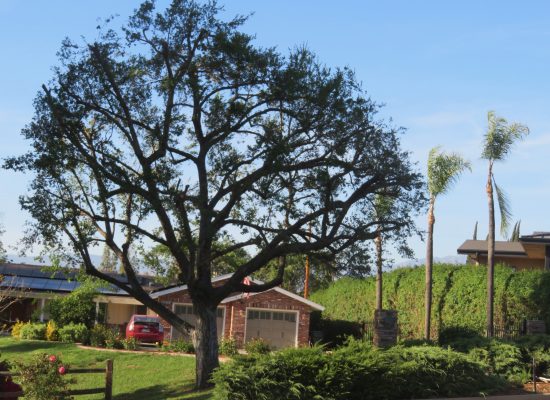
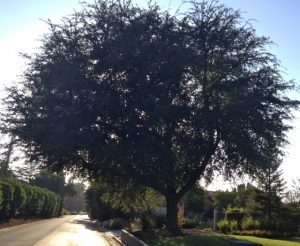

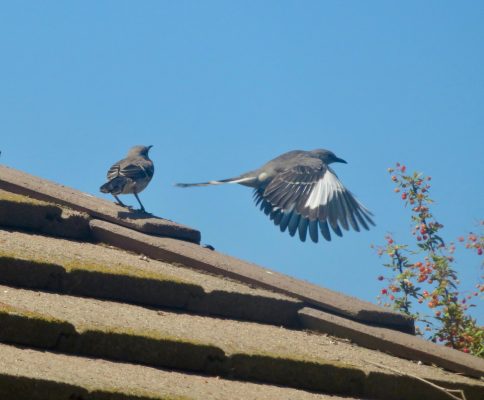
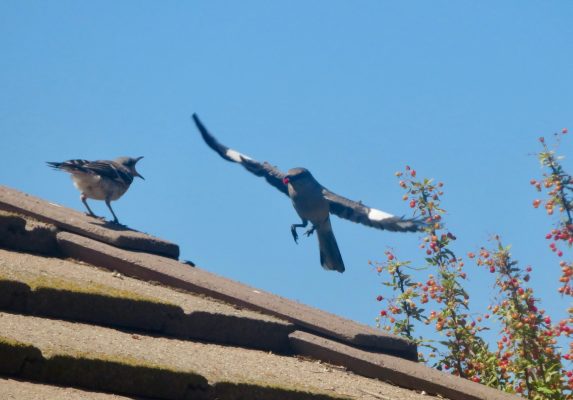
Leave a Reply